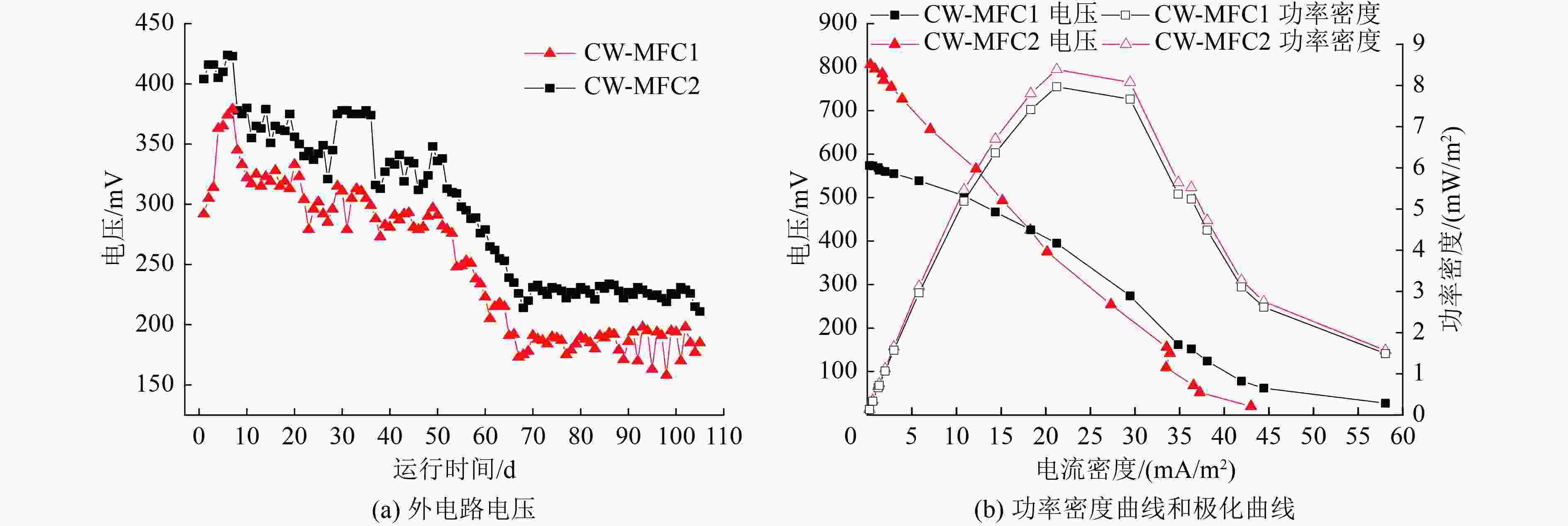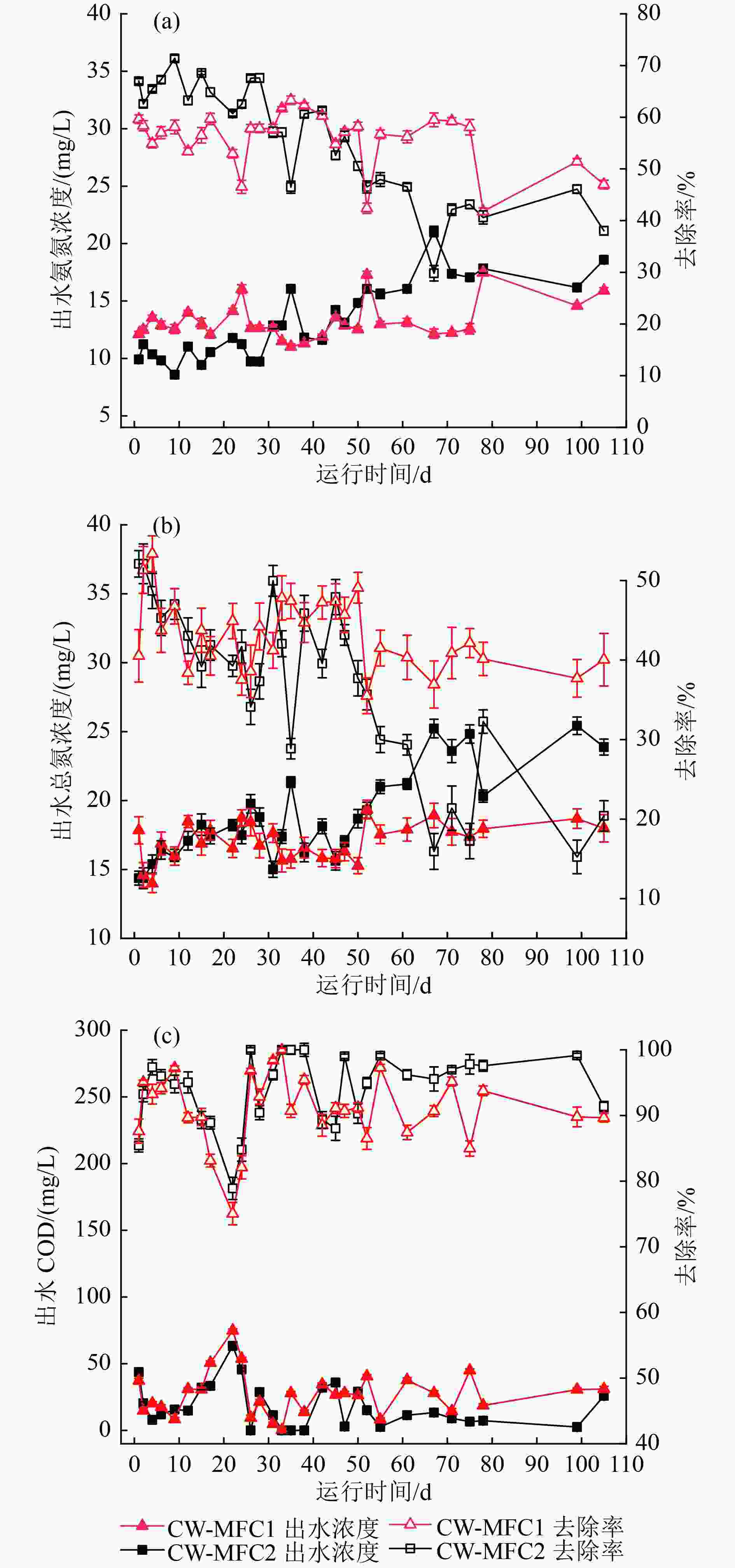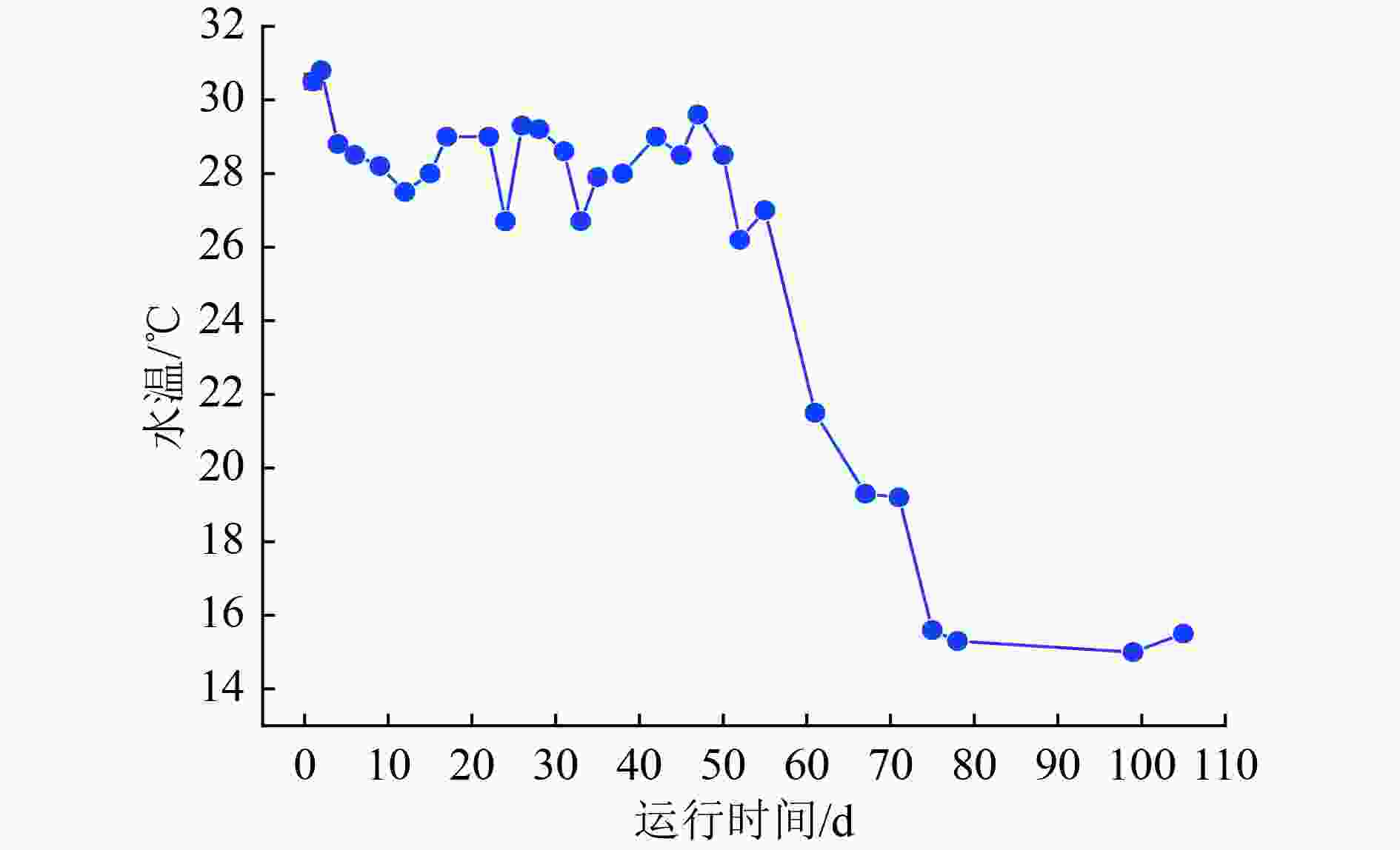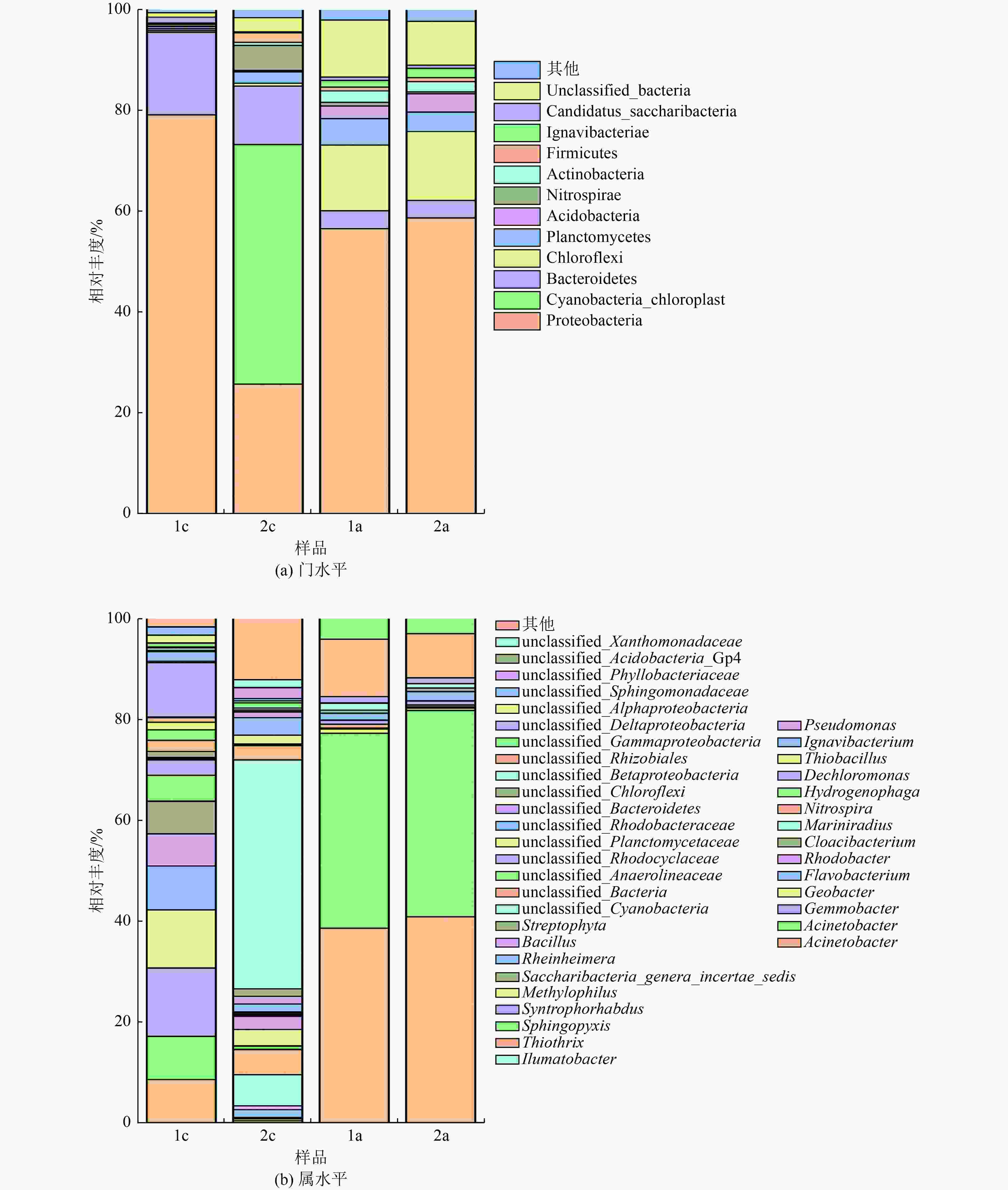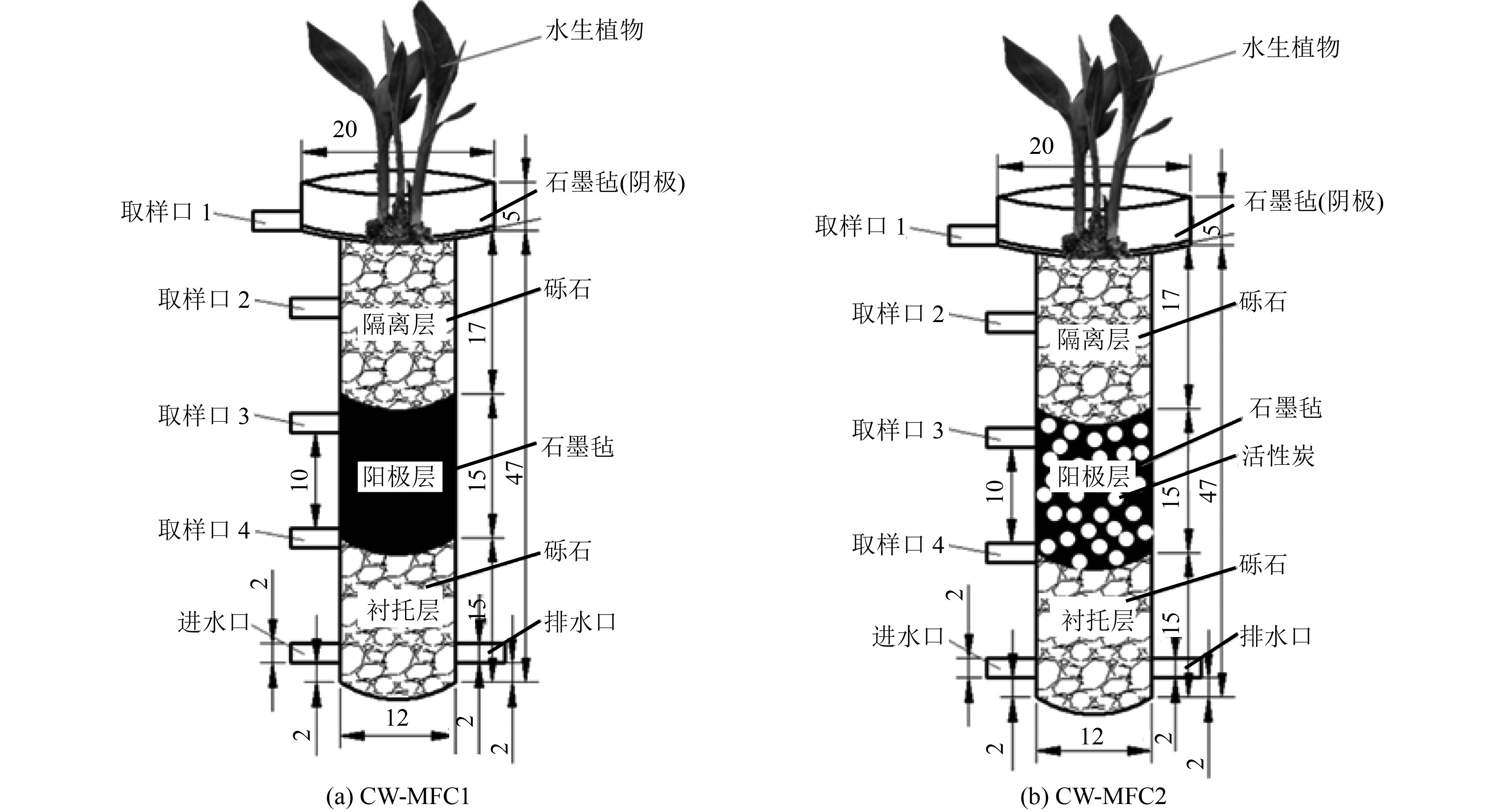Effects of different anode settings on the performance of nitrogen removal and electrogenesis capacity in constructed wetland-microbial fuel cells
-
摘要:
人工湿地-微生物燃料电池(constructed wetland-microbial fuel cell, CW-MFC)耦合系统是人工湿地和生物电化学技术的有机结合,其中阳极是限制耦合系统输出功率和污染物净化性能的关键因素。构建了未加入颗粒活性炭(CW-MFC1)和加入颗粒活性炭(CW-MFC2)2套耦合系统以探讨阳极加入颗粒活性炭对耦合系统产电和脱氮性能的影响,并利用高通量测序技术对比分析2套系统阳极和阴极微生物群落组成。结果表明:CW-MFC2耦合系统的输出电压和最大功率密度(430 mV,8.39 mW/m2)高于CW-MFC1(379 mV,7.77 mW/m2)。试验运行前期(0 ~29 d),CW-MFC2耦合系统的氨氮去除率为65.72%±3.06%,显著高于CW-MFC1(56.06%±3.71%),而二者的总氮去除率相差不大;随着时间的推移(30 ~105 d),CW-MFC1耦合系统的氨氮和总氮去除率逐渐高于CW-MFC2,尤其是总氮去除更为显著(CW-MFC1为42.69%±4.19%,CW-MFC2为32.50%±11.51%)。高通量测序结果表明,CW-MFC1阳极富集的不动杆菌属以及阴极大量的反硝化菌(巨大芽殖杆菌属、地杆菌属、黄杆菌属、不动杆菌属和脱氯单胞菌属等)的富集可能是其脱氮性能优于CW-MFC2的主要原因。综上,阳极加入颗粒活性炭可提升CW-MFC耦合系统的产电性能,但不利于生物脱氮过程。
Abstract:Constructed wetland-microbial fuel cell (CW-MFC) coupling system is a combination of constructed wetland and bioelectrochemical technology, in which the anode is the key factor to limit the output power and pollutant purification performance of the coupling system. Two coupling systems, CW-MFC1 (without granular activated carbon) and CW-MFC2 (with granular activated carbon), were constructed to investigate the effects of the addition of granular activated carbon at the anode on the power generation and nitrogen removal performance of the coupling system. The compositions of microbial communities at the anode and cathode of the two systems were analyzed by high-throughput sequencing technology. The results showed that the output voltage and maximum power density (430 mV, 8.39 mW/m2) of the CW-MFC2 reactor were higher than those of CW-MFC1 (379 mV, 7.77 mW/m2). The ammonia nitrogen removal rate of the CW-MFC2 reactor was 65.72%±3.06% in the early stage of the experimental operation (days 0 to 29), which was significantly higher than that of CW-MFC1 (56.06%±3.71%), and the total nitrogen removal rates of the two were relatively close. On days 30 to 105, the ammonia nitrogen and total nitrogen removal rate of the CW-MFC1 reactor were gradually higher than that of CW-MFC2, especially the total nitrogen removal was more significant (CW-MFC1 42.69%±4.19%, CW-MFC2 32.50%±11.51%). Besides, the high-throughput sequencing results showed that the high abundance of Acinetobacter at the anode and plentiful denitrifying bacteria (Gemmobacter, Geobacter, Flavobacterium, Acinetobacter, and Dechloromonas, etc.) in CW-MFC1 might be the main reasons for the better denitrification performance of CW-MFC1 than CW-MFC2. Overall, adding granular activated carbon to the anode could improve the power generation performance of the CW-MFC coupling system, but it was not conducive to the biological nitrogen removal process.
-
Key words:
- constructed wetland /
- microbial fuel cells /
- denitrification /
- granular activated carbon /
- anode
-
-
[1] LOGAN B E, RABAEY K. Conversion of wastes into bioelectricity and chemicals by using microbial electrochemical technologies[J]. Science,2012,337(6095):686-690. doi: 10.1126/science.1217412 [2] KUMAR G G, SARATHI V G S, NAHM K S. Recent advances and challenges in the anode architecture and their modifications for the applications of microbial fuel cells[J]. Biosensors and Bioelectronics,2013,43:461-475. doi: 10.1016/j.bios.2012.12.048 [3] LEOPOLD HEYDORN R, ENGEL C, KRULL R, et al. Strategies for the targeted improvement of anodic electron transfer in microbial fuel cells[J]. ChemBioEng Reviews,2020,7(1):4-17. doi: 10.1002/cben.201900023 [4] XU G H, WANG Y K, SHENG G P, et al. An MFC-based online monitoring and alert system for activated sludge process[J]. Scientific Reports,2014,4:6779. [5] HOU B, LIU X Y, ZHANG R, et al. Investigation and evaluation of membrane fouling in a microbial fuel cell-membrane bioreactor systems (MFC-MBR)[J]. Science of the Total Environment,2022,814:152569. doi: 10.1016/j.scitotenv.2021.152569 [6] YANG Y, ZHAO Y Q, TANG C, et al. Role of macrophyte species in constructed wetland-microbial fuel cell for simultaneous wastewater treatment and bioenergy generation[J]. Chemical Engineering Journal,2020,392:123708. doi: 10.1016/j.cej.2019.123708 [7] WU D, YANG L Y, GAN L, et al. Potential of novel wastewater treatment system featuring microbial fuel cell to generate electricity and remove pollutants[J]. Ecological Engineering,2015,84:624-631. doi: 10.1016/j.ecoleng.2015.09.068 [8] XU D, XIAO E R, XU P, et al. Effects of influent organic loading rates and electrode locations on the electrogenesis capacity of constructed wetland-microbial fuel cell systems[J]. Environmental Progress & Sustainable Energy,2017,36(2):435-441. [9] SRIVASTAVA P, YADAV A K, MISHRA B K. The effects of microbial fuel cell integration into constructed wetland on the performance of constructed wetland[J]. Bioresource Technology,2015,195:223-230. doi: 10.1016/j.biortech.2015.05.072 [10] TIMMERS R A, STRIK D P B T B, HAMELERS H V M, et al. Characterization of the internal resistance of a plant microbial fuel cell[J]. Electrochimica Acta,2012,72:165-171. doi: 10.1016/j.electacta.2012.04.023 [11] 王海燕, 赵远哲, 王文富, 等.人工湿地脱氮影响因素及强化措施研究进展[J]. 环境工程技术学报,2020,10(4):585-597. doi: 10.12153/j.issn.1674-991X.20190150WANG H Y, ZHAO Y Z, WANG W F, et al. A review of influencing factors and enhanced measures for nitrogen removal of constructed wetlands[J]. Journal of Environmental Engineering Technology,2020,10(4):585-597. doi: 10.12153/j.issn.1674-991X.20190150 [12] LI H F, LIU F, LUO P, et al. Stimulation of optimized influent C: N ratios on nitrogen removal in surface flow constructed wetlands: performance and microbial mechanisms[J]. Science of the Total Environment,2019,694:133575. doi: 10.1016/j.scitotenv.2019.07.381 [13] ODEDISHEMI AJIBADE F, WANG H C, GUADIE A, et al. Total nitrogen removal in biochar amended non-aerated vertical flow constructed wetlands for secondary wastewater effluent with low C/N ratio: microbial community structure and dissolved organic carbon release conditions[J]. Bioresource Technology,2021,322:124430. doi: 10.1016/j.biortech.2020.124430 [14] JADHAV G S, GHANGREKAR M M. Performance of microbial fuel cell subjected to variation in pH, temperature, external load and substrate concentration[J]. Bioresource Technology,2009,100(2):717-723. doi: 10.1016/j.biortech.2008.07.041 [15] XU L, ZHAO Y Q, WANG X D, et al. Applying multiple bio-cathodes in constructed wetland-microbial fuel cell for promoting energy production and bioelectrical derived nitrification-denitrification process[J]. Chemical Engineering Journal,2018,344:105-113. doi: 10.1016/j.cej.2018.03.065 [16] COBAN O, KUSCHK P, KAPPELMEYER U, et al. Nitrogen transforming community in a horizontal subsurface-flow constructed wetland[J]. Water Research,2015,74:203-212. doi: 10.1016/j.watres.2015.02.018 [17] 侯俊青, 赵吉, 李佳, 等.自然生境中厌氧氨氧化功能微生物生态学研究进展[J]. 环境科学研究,2019,32(12):1984-1992. doi: 10.13198/j.issn.1001-6929.2019.03.23HOU J Q, ZHAO J, LI J, et al. Current insight on microbial ecology of anaerobic ammonium oxidation in natural environment[J]. Research of Environmental Sciences,2019,32(12):1984-1992. doi: 10.13198/j.issn.1001-6929.2019.03.23 [18] INOUE J I, OSHIMA K, SUDA W, et al. Distribution and evolution of nitrogen fixation genes in the Phylum Bacteroidetes[J]. Microbes and Environments,2015,30(1):44-50. doi: 10.1264/jsme2.ME14142 [19] CHENG C, SUN T Y, LI H J, et al. New insights in correlating greenhouse gas emissions and microbial carbon and nitrogen transformations in wetland sediments based on genomic and functional analysis[J]. Journal of Environmental Management,2021,297:113280. doi: 10.1016/j.jenvman.2021.113280 [20] 姚倩, 彭党聪, 赵俏迪, 等.活性污泥中硝化螺菌(Nitrospira)的富集及其动力学参数[J]. 环境科学,2017,38(12):5201-5207.YAO Q, PENG D C, ZHAO Q D, et al. Enrichment of Nitrospira in activated sludge and kinetic characterization[J]. Environmental Science,2017,38(12):5201-5207. [21] CAI W, LI Y, NIU L H, et al. New insights into the spatial variability of biofilm communities and potentially negative bacterial groups in hydraulic concrete structures[J]. Water Research,2017,123:495-504. doi: 10.1016/j.watres.2017.06.055 [22] WANG C, LIU S Y, ZHANG Y, et al. Bacterial communities and their predicted functions explain the sediment nitrogen changes along with submerged macrophyte restoration[J]. Microbial Ecology,2018,76(3):625-636. doi: 10.1007/s00248-018-1166-4 [23] PAITIER A, GODAIN A, LYON D, et al. Microbial fuel cell anodic microbial population dynamics during MFC start-up[J]. Biosensors and Bioelectronics,2017,92:357-363. doi: 10.1016/j.bios.2016.10.096 [24] 王思宇, 李军, 王秀杰, 等.添加芽孢杆菌污泥反硝化特性及菌群结构分析[J]. 中国环境科学,2017,37(12):4649-4656. doi: 10.3969/j.issn.1000-6923.2017.12.030WANG S Y, LI J, WANG X J, et al. Denitrification characteristics of Bacillus subtilis sludge and analysis of microbial community structure[J]. China Environmental Science,2017,37(12):4649-4656. doi: 10.3969/j.issn.1000-6923.2017.12.030 [25] MIKES M C, MARTIN T K, MOE W M. Azospira inquinata sp. nov. , a nitrate-reducing bacterium of the family Rhodocyclaceae isolated from contaminated groundwater[J/OL]. International Journal of Systematic and Evolutionary Microbiology, 2021.doi: 10.1099/ijsem.0.005172. [26] LI Z, LI L, SUN H Y, et al. Ammonia assimilation: a double-edged sword influencing denitrification of Rhodobacter azotoformans and for nitrogen removal of aquaculture wastewater[J]. Bioresource Technology,2022,345:126495. doi: 10.1016/j.biortech.2021.126495 [27] WANG J F, SONG X S, WANG Y H, et al. Bioenergy generation and rhizodegradation as affected by microbial community distribution in a coupled constructed wetland-microbial fuel cell system associated with three macrophytes[J]. Science of the Total Environment,2017,607/608:53-62. doi: 10.1016/j.scitotenv.2017.06.243 [28] 王义安, 张学洪, 郑君健, 等.不同基质碳源下人工湿地微生物燃料电池的电化学性能及微生物群落结构[J]. 环境工程学报,2021,15(11):3696-3706. doi: 10.12030/j.cjee.202108060WANG Y A, ZHANG X H, ZHENG J J, et al. Electrochemical properties and microbial community structure of constructed wetland microbial fuel cell under different matrix carbon source[J]. Chinese Journal of Environmental Engineering,2021,15(11):3696-3706. doi: 10.12030/j.cjee.202108060 [29] COATES J D, CHAKRABORTY R, LACK J G, et al. Anaerobic benzene oxidation coupled to nitrate reduction in pure culture by two strains of Dechloromonas[J]. Nature,2001,411(6841):1039-1043. doi: 10.1038/35082545 [30] HOSONO T, ALVAREZ K, LIN I T, et al. Nitrogen, carbon, and sulfur isotopic change during heterotrophic (Pseudomonas aureofaciens) and autotrophic (Thiobacillus denitrificans) denitrification reactions[J]. Journal of Contaminant Hydrology,2015,183:72-81. doi: 10.1016/j.jconhyd.2015.10.009 [31] SZEKERES S, KISS I, KALMAN M, et al. Microbial population in a hydrogen-dependent denitrification reactor[J]. Water Research,2002,36(16):4088-4094. doi: 10.1016/S0043-1354(02)00130-6 [32] DU L, TRINH X, CHEN Q R, et al. Enhancement of microbial nitrogen removal pathway by vegetation in Integrated Vertical-Flow Constructed Wetlands (IVCWs) for treating reclaimed water[J]. Bioresource Technology,2018,249:644-651. doi: 10.1016/j.biortech.2017.10.074 [33] SPIELES D J, MITSCH W J. The effects of season and hydrologic and chemical loading on nitrate retention in constructed wetlands: a comparison of low- and high-nutrient riverine systems[J]. Ecological Engineering,1999,14(1/2):77-91. [34] XU D, LIN L L, XU P, et al. Effect of drained-flooded time ratio on ammonia nitrogen removal in a constructed wetland-microbial fuel cell system by tidal flow operation[J]. Journal of Water Process Engineering,2021,44:102450. doi: 10.1016/j.jwpe.2021.102450 [35] BONANNI P S, DAVID SCHROTT G, BUSALMEN J P. A long way to the electrode: how do Geobacter cells transport their electrons[J]. Biochemical Society Transactions,2012,40(6):1274-1279. ◇ doi: 10.1042/BST20120046 -




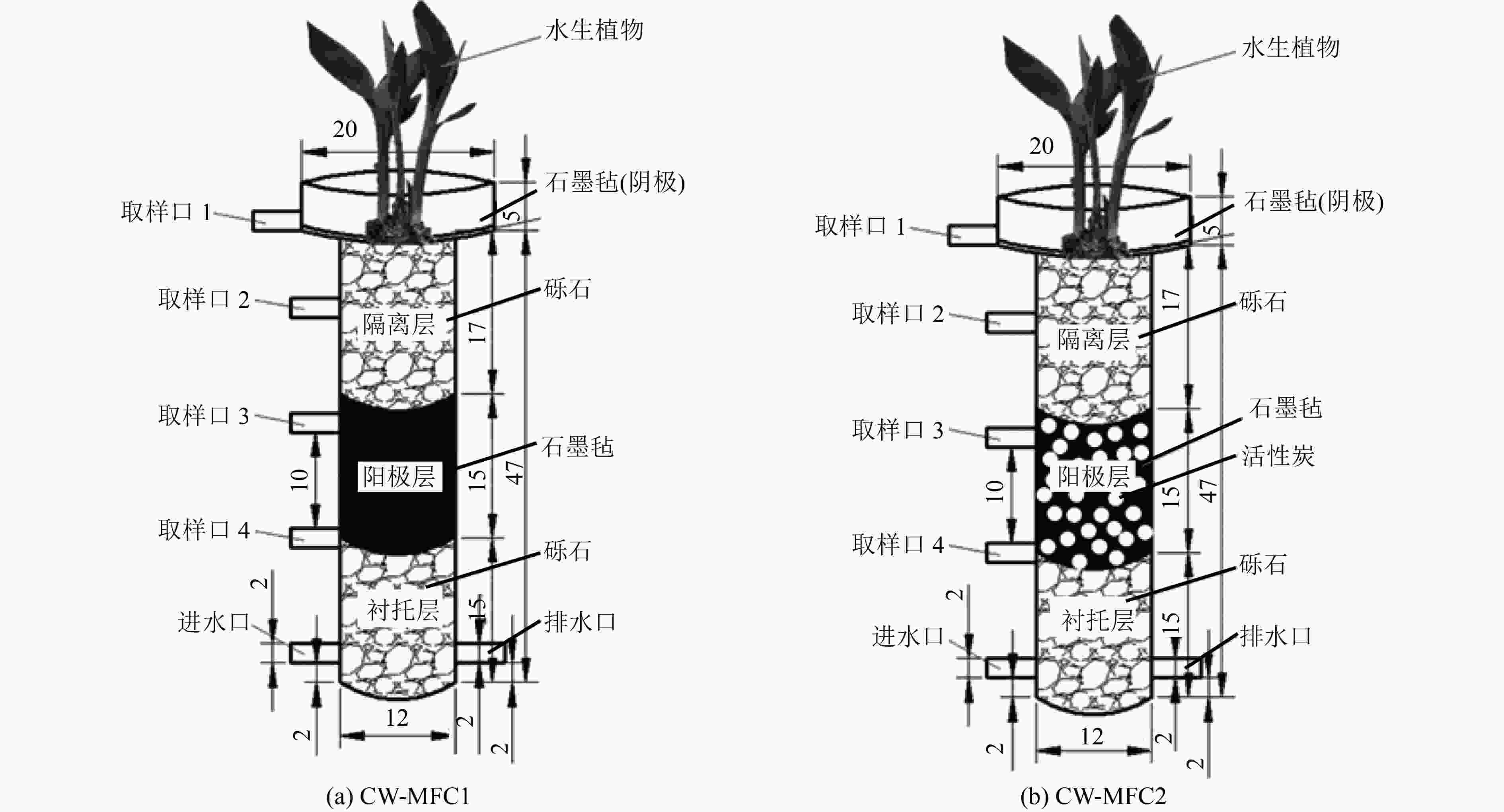
 下载:
下载:
